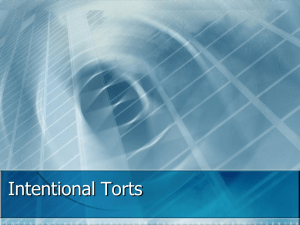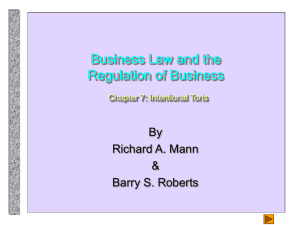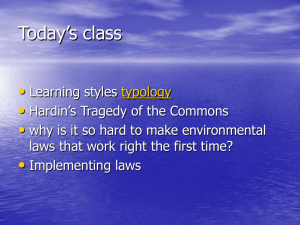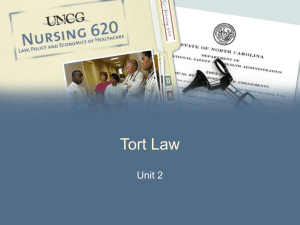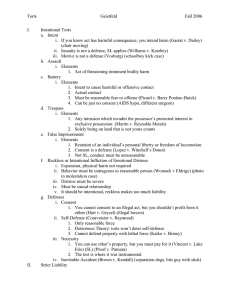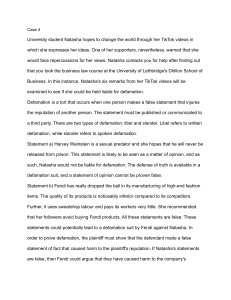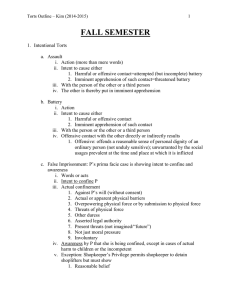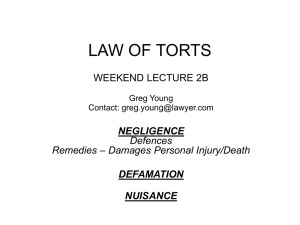Intentional Torts
advertisement
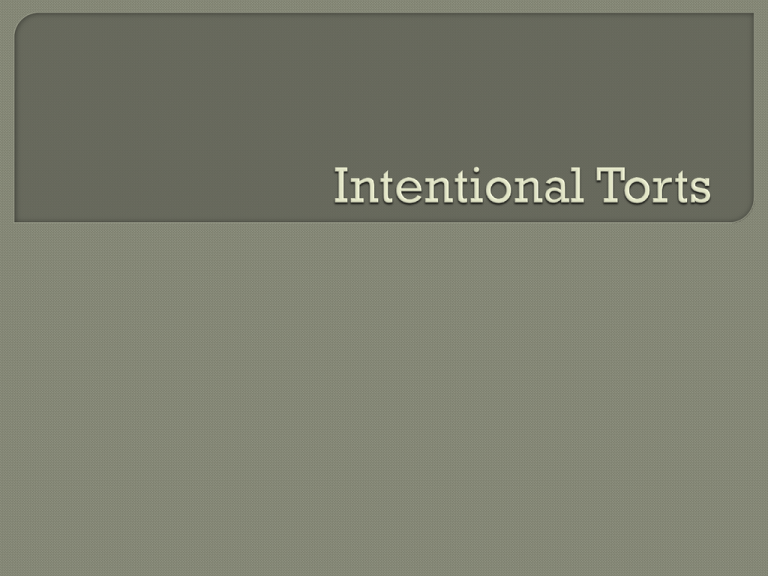
Actions taken to deliberately harm another person or their property Intent, desire the action or motive do not count only 1. Compensatory damages Example: money for hospital bills, lost wages, pain and suffering. Juries decide what amount 2. Nominal Damages • -an award to show that the claim was justified- symbolic, usually can’t prove serious injury 3. Punitive Damages • Amounts of $$ awarded to punish the defendant, warns others not to do the same Torts that injure persons Battery and Assault Infliction of Emotional Distress False Imprisonment Torts related defamation Torts that harm property Real Property Personal Property Intellectual Property Patents & Copyrights Obvious-assault and battery Infliction of emotional distress-words or actions that cause extreme anxiety or emotional distress. Not often awarded a lot of money False Imprisonment-right to be free from unreasonable restraint. Issue: Can a shopkeeper use restraint to detain a shoplifter? Defamation of character Libel-false and malicious written words Slander-spoken words that are false and malicious Which is more difficult to prove Private citizens Public citizens who claim defamation must prove that the action was false and prove malice 1. Person’s use of property can’t be interfered with 2. protects person against property being taken or damaged Three types of property that are protected 1. Real Property 2. Personal Property 3. Intellectual Property Can require you to use reasonable care to protect other persons from harm while on your property Must fence in construction sites, swimming pools Taken, damaged or interfered with A burglar breaks into Laura’s house, steals her computer and the criminal is caught and convicted Burglar can also be sued by Laura under conversion-someone unlawfully exercises control over the personal property of another person Reasonable force can be used to protect property Deadly force can’t be used to protect property Only applies to protect from serious threat of bodily harm When a person has a patent or copyright, any use by another person without permission is a tort called infringement Patents-rights to inventions, processes, new machines, products Fair use-allows limited legal reproduction of copyrighted works for certain purposes-scholarship, research, news 1. Consent-consent forms for medial care, emergency not needed. Can be stated consent or assumed 2. Privilege-police officers that take the liberty of a person by arresting them are not liable for false imprisonment. Best known privilege is self defense, not revenge though 3. Defense of Property-reasonable not deadly—see Castle Doctrine
